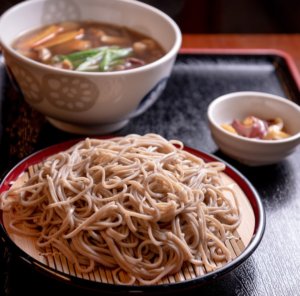Japanese Food Going International: Sushi, Ramen, etc.
CONTENTS
(The photo is Osechi Ryori*: Japanese New Year Feast)
Japanese Food Going International: Sushi, Ramen, etc.
The world as it concerns food in the 21st century is an extraordinary spectacle. On the one hand are the famine and food shortages among developing nations, on the other is gluttony and obesity. Heightened global interest in Japanese food can be explained by the fact that it wastes almost nothing, and by its powerful image as being healthy. But what people eat is so much a part of every country’s culture, and indeed of life itself, that what others are accepting from us has been really much greater than just a style of cooking.
The father of runner Usain Bolt commented from faraway Jamaica on his son’s astounding new world records in the 100- and 200-meter events at the Beijing Olympics by saying, “It’s all thanks to the yams he’s been eating since childhood.” What! How can that be? Though many might have been surprised, in fact the starches contained in the simple yam provide energy to the body and its proteins are helpful in bone formation.
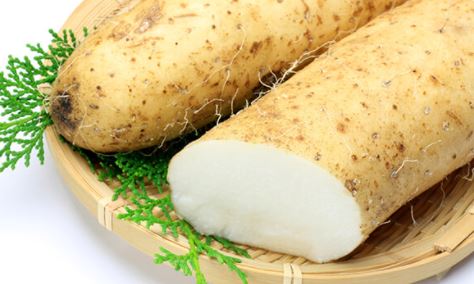
The best place for yams is not in fact Jamaica but West Africa, where about 96% of the world’s yams are cultivated. Starches derived from the yam are processed into glue and alcohol products, and the yam has come to be called “a gift from the gods” with gratitude and respect in the countries of West Africa. But it was not easy to increase the yield on this crop. Planting one kernel of corn will yield 300, but if a yam is typically cut into three parts and planted, the next year you will get only three yams. If you want to be able to harvest the same volume in a following season, you have to keep one-third aside to plant as seed potatoes. It was a scientist from the only advanced nation to eat yams on a daily basis, namely Japan, who gave West Africa a helping hand with this problem of yield.
Tokyo University of Agriculture Professor Hironobu Shiwachi (age 48) had lived in Nigeria since 1990, working to improve the seed potato. He would make seed potatoes by cutting the vine as soon as the tiny tubers began to grow, transplanting them to pots where they would grow for 100 days. This method allowed farmers to consistently obtain about 50 seed potatoes from one potato stump. The next step was to develop a technique for modifying the harvest stage by using hormone injections to shorten the dormant period of the yam (when it does not actively grow). In the near future it should be possible to harvest yams somewhere in West Africa at any time of the year.
Nigerian farmers have adopted these techniques, and young West African researchers are learning ways to increase yield from Japanese scientists in order to take on the role of technical teacher once they return home. As the shifting of crops to produce bio-ethanol for fuel spreads, food prices have shot up, and so in West Africa the value of these techniques is highly regarded as being an extremely timely research. Professor Shiwachi says, “Increasing yam yield will lead to the elimination of Africa’s food shortage. Japan which has a low level of self-sufficiency in terms of food must also apply herself to the potato.” He continues his research back in Japan experimenting with cross-fertilization of Japanese and African seeds.
Shakeable Soy Sauce For a Global Palate
A “shakeable” soy sauce (furikake shoyu) is slowly gaining popularity in Europe and the US. The 255-year old soy maker Kamebishiya has used a freeze drying process on aged high quality soy sauce to create a powdered product known as “soy salt”. The product caught on via the Internet, and has grown so rapidly as to represent almost 20% of their sales today. Key to remember is that half of Kamebishiya’s sales are exports to the US and France.
Kanae Okada is the first woman president of Kamebishiya which was founded in 1753. She turned her language skills to great advantage by doing cold call sales to restaurants in the US to open up the first distribution routes. At the first sign of interest from her sales prospect she would whip out the soy salt samples and ask that they be handed over to the chef. If all went well she would get the immediate reaction from the kitchen and also create an opportunity to talk directly to the chef. “Chefs get it right away. As soon as they see the product they understand that they can use it in ways they could never use regular soy sauce.” Namely the soy flavor can be applied to just the desired area, without adding liquid or wetting the food. The appearance is more refined. Exploiting the advantages of soy salt over the traditional soy sauce, soy salt is being used in carpaccio, salads, and other preparations.
Okada’s plucky sales approach not only got her in the door but gained her successful sales at some top restaurants including Aquavit in New York and Le Bristol Hotel in Paris. As a young girl, Kanae thought that the family business was old-fashioned and was embarrassed by it. She never considered taking over the business and pursued other work. What made her chose to succeed in the family business as the 17th generation was when she started to feel while working at other jobs that “I couldn’t talk about anything with confidence and assurance.” In 1994 she went back to the family to begin her training.
“The traditional method of soy manufacture cannot be altered. But there are aspects that can be made new, such as product design.” A fresh wind began to blow at the venerable Kamebishiya. After creating soy salt, the family went on to develop other new products including soy biscuits or wafers and soy gelato. Next year they plan to offer a limited edition Valentine’s Day product made of a strongly acidic chocolate flavored with soy sauce, and are already signing up well-known Tokyo shops to handle the special. This is a whole new market opened up by soy salt. In fact soy sauce has been like a flower that blooms on wider soil having leapt from being a Japanese condiment to being part of a global palate. Let’s look a little deeper at the globalization of soy sauce.
Soy Sauce and Miso Go International
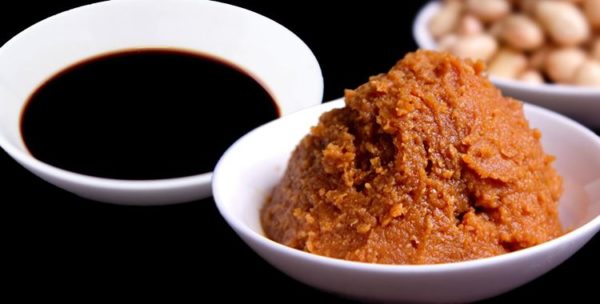
Just how far has soy sauce, which could be regarded as synonymous with the Japanese palate of tastes, spread in the world outside of Japan? According to a study conducted by soy sauce giant Kikkoman in the US in 2005, about 40% of households keep soy sauce on hand. Even among those that don’t normally have it on hand, about 20% answered that they have used it in the home. Kikkoman products are available in about 100 countries around the world, and overseas sales represented 51% of Kikkoman’s profit in 2006. Kikkoman promotes its teriyaki sauce which goes well with steak and other meat dishes as well as its stir fry sauce for vegetables in the US and Europe, while in Taiwan and Singapore it emphasizes its amakuchi (sweetened) soy. It has been making products that meet the tastes of each nation.
Kikkoman began its entry into the US market in 1957. Employees would drive around in their cars looking for households that were barbequing in the backyard, offering samples to add to their steaks. A Kikkoman spokesperson explains, “Locally, our efforts were to have people use soy sauce in cooking, which they would do every day.”
On the other hand, the miso industry which has been slow to internationalize use of its product has just begun to work on developing overseas markets. If a food becomes fashionable overseas, this has a strong impact on young Japanese at home who have been slipping away from traditional Japanese foods, so that developing a market overseas can be a way to kill two birds with one stone. A variety of recipes including carpaccio, tacos, and spring rolls have been developed together with local chefs. “We are not aiming to export a finished product like miso-shiru soup. Our starting point is to get people to use miso in the food that they are eating already.” The international strategy for miso and soy sauce are identical. Adjusting to the needs of the other culture, you can blend in anywhere. This very flexibility may be the charm that has brought such growth to the rich “taste” of Japan.
Slim Japanese
According to obesity rates for ages 15 and up for 30 major nations compiled by the OECD, the nation with the top ratio of “obese” people, namely body mass index of 30 or above (BMI equals weight divided by height squared) is the US with 32.2%. Japan together with Korea is the lowest at 3.2%, in a totally different league at just 1/10th that of the US. Japan is also lowest in “overweight” population. Even without these statistics, Japan is the nation of the longest-lived people, so it’s only natural that the image of Japanese food is healthy.
When discussing the attraction of Japanese food outside of Japan, what often comes up is the concept of macrobiotics. This is a method of cooking and eating that originated in Japan. The fundamentals include a meal base of genmai or brown rice, whole vegetables in cooking, well chewed food, and no animal fats or additives. In Europe and the US macrobiotics has found support among celebrities and the wealthy, such as the late John Lennon and actor Tom Cruise. There are said to be between 4-5 million macrobiotic enthusiasts in Europe and the US, with as many as 50 million worldwide.
Since the 70s in the US, over-consumption of meat has been viewed as problematic in terms of causing cancer and obesity, and the educated classes began to embrace Japanese food. Reasons for its popularity are said to be that all the ingredients are clearly identifiable, it is not greasy, fermented products like miso and soy sauce are used widely, and it is well digested and absorbed by the body. In the US the number of Japanese restaurants is increasing at the rate of about 8.5% a year. These mainly feature fusion cuisine which is a style that matches Japanese ingredients and methods with the American palate. Representative of this fusion cuisine is New York’s Bouley which was voted number one in popularity by a US food magazine.
Owner and head chef David Bouley tells, “What is most liked in New York where things move very fast is a meal that is healthy, that is clean and that gives the most energy.” He adds, “That’s why Japanese food is so popular.”
Evolution of Sushi
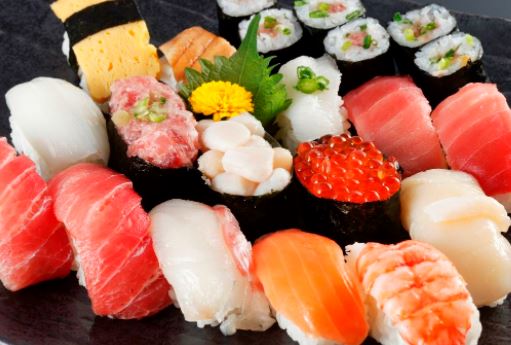
Synonymous with Japanese food outside of Japan can be only one - sushi. Resistance to eating raw fish is fading away as sushi permeates the food culture of the world. The Tokyo Sushi Academy supports sushi chefs in job placement and starting businesses overseas. Tuition for the Professional or Diploma course runs about 500,000 yen, too expensive for someone who is not planning to start their own business. That’s why there are many men with strong ambition to start their own restaurant. Counting the much shorter Private course students, the Tokyo Sushi Academy has graduated over 1,000 students since its founding in 2002. Its graduates are working in forty countries all around the world including the US, Russia, and Chile.
The sushi boom has continued over the past decade or so in the major nations of the world. There are some obvious examples of sushi restaurants opening on the basis of this boom without the chefs having proper knowledge of how to handle raw fish. It is an urgent task for the sushi industry to properly train and place in overseas positions sushi chefs who are thoroughly knowledgeable and competent in working with sushi. Makoto Fukue, the head of the Tokyo Sushi Academy, tells, “I believe we are sending out people who can educate the world.”
On the other side of this type of effort, internationalization has brought about the “evolution” of sushi. In Taiwan there is a restaurant that uses shredded cabbage in place of the vinegared rice that is used to made hand rolls. Hong Kong has seen a chocolate hand roll for a dessert item, and a Japanese sushi chef at another Hong Kong restaurant was asked to make the same thing. There are far more sushi restaurants overseas than there are Japanese sushi chefs. Many are managed and operated solely by non-Japanese. As of November 2006 there were 10,000 Japanese restaurants in North America, 2,000 in Europe and 500 in Russia. Together with transmitting Japan’s food culture, that very food culture is exposed to different environments from which new changes are born and actively incorporated. This must be the new challenge created by globalization.
It’s Only Ramen, But Ramen!

Ajisen Ramen based in Kyushu’s Kumamoto is the world’s most well-known chain of ramen noodle soup restaurants. As of October 2020 Ajisen had 74 shops in Japan and 776 overseas. Inside each store is a map of the world with the words, “From Kumamoto To The World.” Last year Ajisen opened its first European shop in the Netherlands, thus conquering its 5th continent. Just as its slogan reads, it is a global chain, but with 231 shops China is by far its largest overseas presence.
In the steaming donburi bowl, dark oil floats on top of the cloudy pork and vegetable broth. This is a traditional Kumamoto style ramen. Ajisen president Katsuaki Shigemitsu (age 39) tells, “Advanced nations are quick to accept new things.” At the time that Ajisen opened its first overseas shop in Taiwan in 1994, Ajisen changed the flavors of its ramen dishes to meet the requests of customers. But the shop actually lost business and was forced to close down. Shigemitsu says the company took this bitter failure as a lesson. “From then on we have aimed to offer the same taste worldwide. It’s whether we are upholding the standard or not. To verify this we do surprise visits to our shops overseas.” In China Ajisen offers hundreds of side dishes in order to provide for a variety of customer needs, but even so the majority of customers choose ramen.
While the pace of overseas expansion continues to accelerate, the popularity of ramen is giving rise to “reverse importing.”
This bilingual signboard stands outside Ivan Ramen in Setagaya ward, Tokyo, a ramen shop run by New York native Ivan Orkin (age 45). As soon as he opened his doors he got rave reviews, and Ivan Ramen joined the ranks of favored ramen shops on TV and in print.
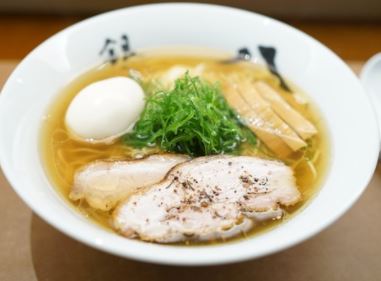
Though he had only experienced ramen as Cup Noodle while at college, Ivan met his destiny at a viewing of the late Itami Juzo’s film Tampopo about the quest to make a perfect ramen. “I watched that movie more than a hundred times. I was so shocked to find out what a real ramen was all about.” After graduating, Ivan traveled to Japan to indulge his ramen obsession. After returning to the US he studied cooking and ended up working at a famed French restaurant, Lutece. Recruited to work as a private chef for a major corporation, he settled into a comfortable living. But, “I loved ramen so much…” he set off determinedly for Japan again.
The ramen dish he perfected for his opening used his experience with French cooking and kept the showiness of the outward appearance in check. He chose to make what he calls the classics, namely shoyu-aji and shio-aji (soy sauce ramen and salt ramen). “I wanted everyone to know I was totally serious. It’s not some gaijin (non-Japanese) making ramen, it’s a ramen-lover making ramen.”
Food overthrows assumptions and prejudice. Food as a category of aspiration throws open the doors to the future.
Osechi or Osechi Ryori is the special dishes served on the first three days of the New Year. They are usually stored in ornate lacquered boxes called "jubako." The foods are preserved, so people need not cook during the three days. Each dish contains a symbolic wish for health or prosperity in the New Year. For example, "kazunoko" (herring roe) represent the wish for abundant offspring and "tazukuri" (dried sardines) for a good year of bumper crops, while "kombu" stands for being happy.


